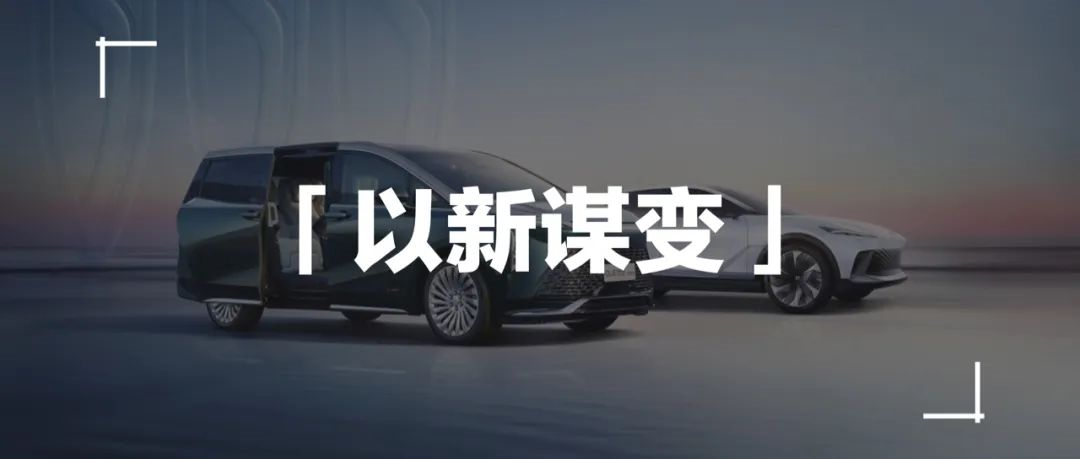Author: ShenXiang
After the success of the online auto show on May 20th, car companies did not miss the great opportunity of the Children’s Day. They brought some festive atmosphere that is out of place for adults who are always thinking about big toys.
For Buick, which has been in China for 24 years, the meaning of this year’s Children’s Day is much more complicated. The decline of 10% last year has not shown any signs of recovery, and the headquarters has suffered from several months of epidemic control. At this time, holding a lively “Buick Brand Day” is naturally an opportunity to showcase the strength of the brand.
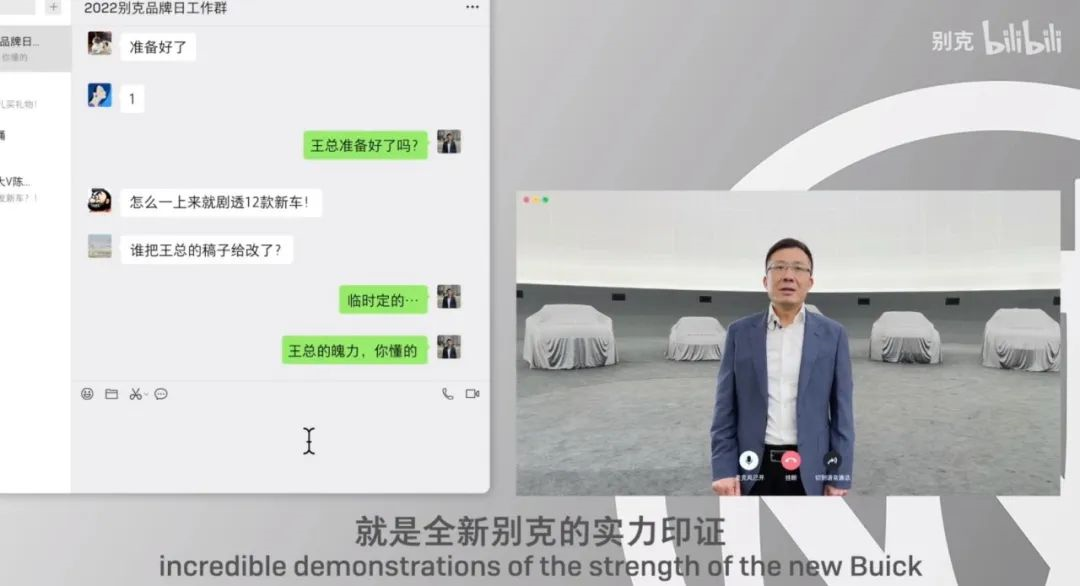
Next, let’s see how this centenarian from the United States presents a gorgeous transformation on the land of China once again.
PURE Design – A New Beginning
The first thing to appear is the long-awaited new brand logo. The deeply rooted three-color shield logo cancels the outer circle and changes from a stair-shaped arrangement to a parallel placement. Red, silver, and blue represent safety, texture, and comfort respectively, while the shield shape symbolizes a solid backing on the road to progress.
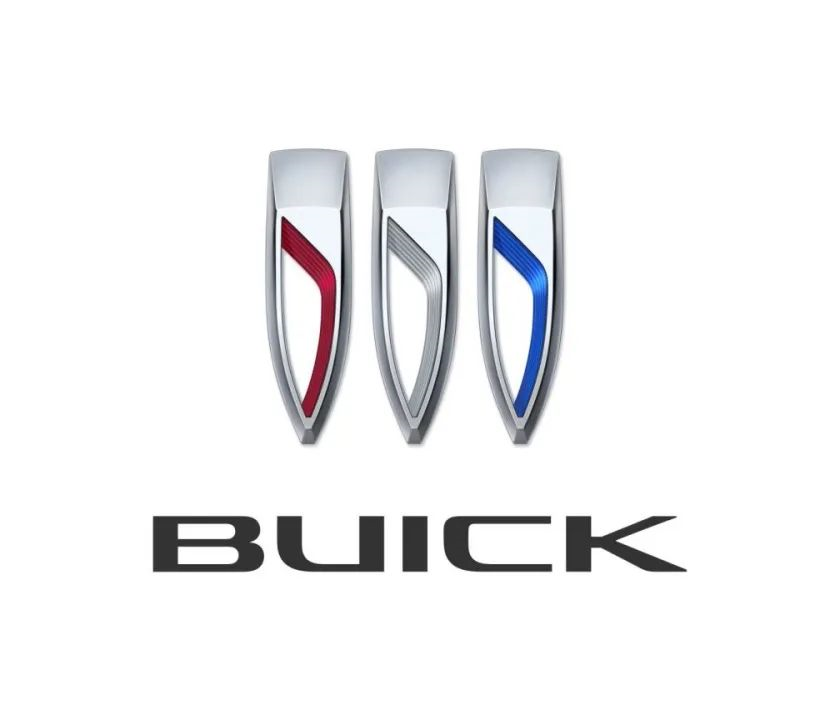
Buick expressed the future development direction with this logo change-electric, intelligent, and high-end. The launch of the new logo will be the first shot to promote transformation and upgrading.
From a design perspective, this wave of logo change achieves a perfect balance between flatness and three-dimensionality. It simplifies complexity while retaining the core features of color and shape. The hollow shield shape makes the visual effect more lightweight, ensuring the continuity of the brand essence while catering to the trend of minimalism in the era of electrification, refreshing and sharp visual effect.
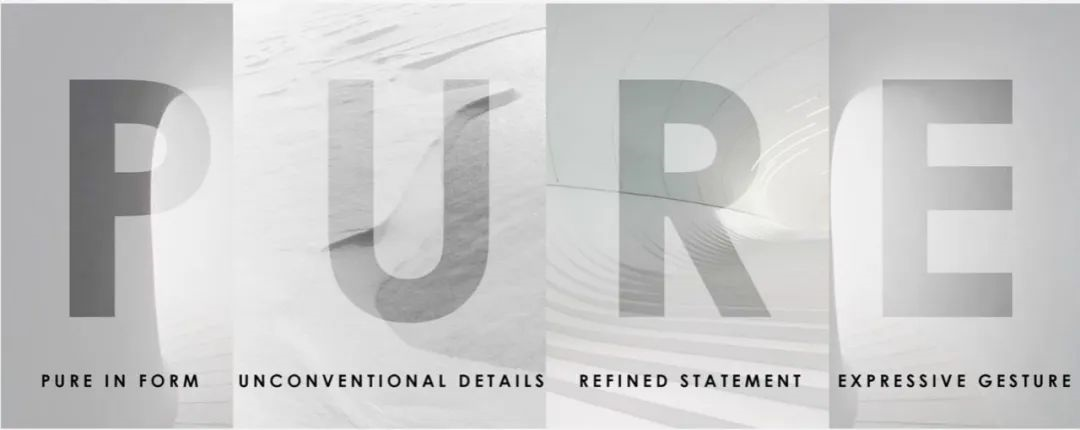
With the logo change, Buick also introduced a new PURE Design concept. It includes four core elements: purity, transcendence, delicacy, and emotion. It replaces the complex and sharp lines with natural and full-fluidity, extracts the core design element of a flying wing, and “simplifies complexity” in the digital era.
To showcase this new design concept, Buick launched three strategic models: the new Buick GL8 Century, the Buick Electra-X concept car, and the Wildcat electric concept car unveiled in North America.
As the name suggests, the new Buick GL8 Century pays tribute to the pioneer of local production in China and breaks through and opens up a more high-end and luxurious subdivision market as the flagship of the GL8 family. It is therefore reasonable to apply the latest design language first.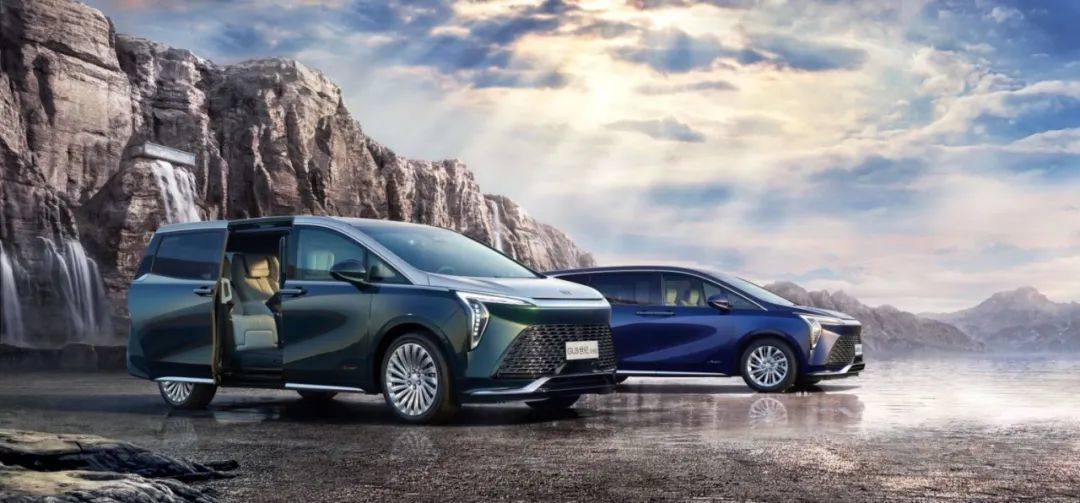
The Aviar version, as the luxurious peak of the entire series, has taken the PURE Design to the extreme. It retains all the luxurious elements such as the two-tone body, the floating roof, the flying-wing LED headlights, the through-type taillights, and the dense spoke wheel rims while being more visually lightweight and elegant. With the combination of American magnificence and Chinese elegance, it has swept away the previous generations’ style of being stable and grand, showing its exquisite beauty in the digital era.
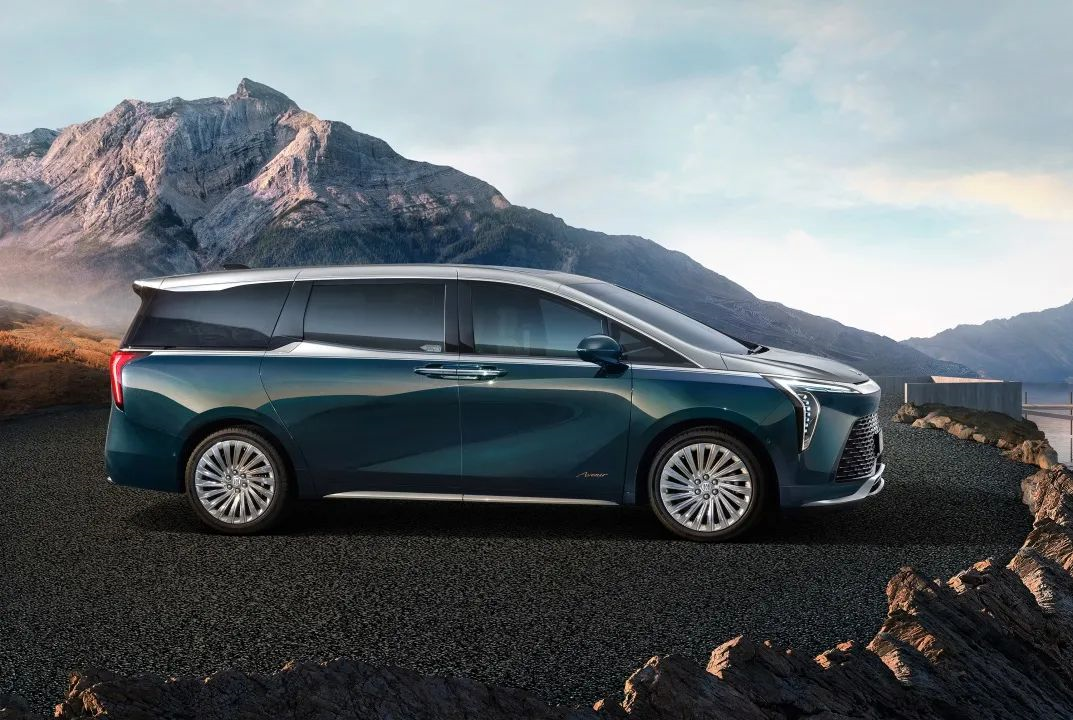
Embarrassingly, some of my friends and I noticed some similarities in the design after carefully examining it, such as the through-type metal decorative strip on the front of the car, which gives the impression of a certain domestic brand. And the lighting effect of the through-type taillights is oddly similar to that of a distant relative. Perhaps the Pan-Asian design center behind it has developed a set of design techniques that are Chinese enough. As long as they amplify the image of GL8 in high-end luxury direction, it will be a successful design.
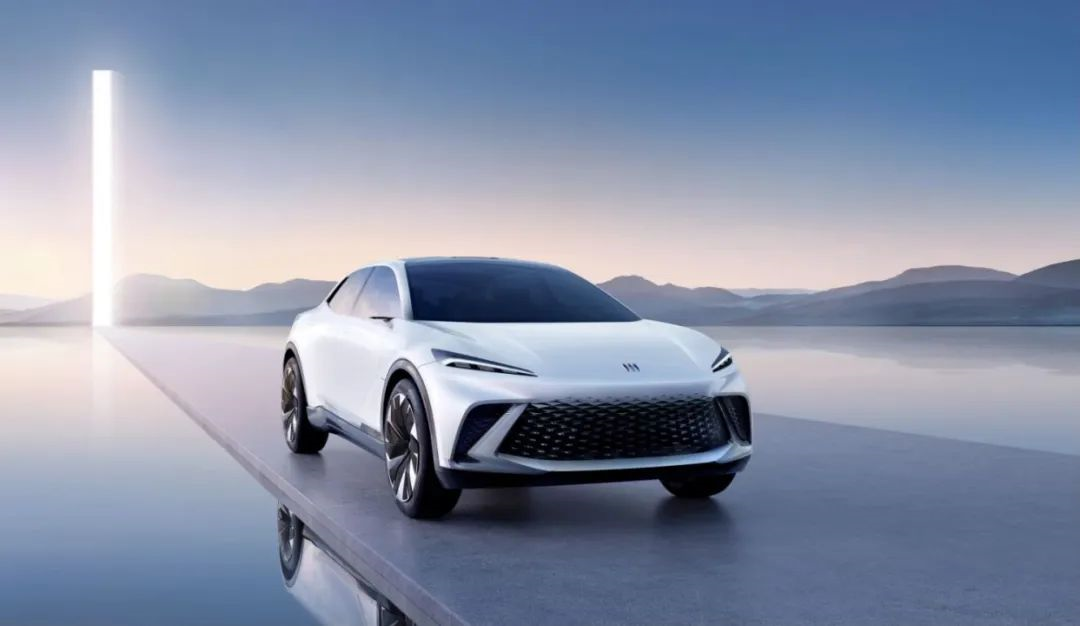
In comparison, the Electra-X concept car, which prefigures the Pure Electric Family’s design language, injects more personality elements.
Considering the technical bottom of the Ultium ultra-energy electric vehicle platform, Electra-X does not show the future’s wildness, but guides the design evolution of the next generation of electric vehicles in a more rational manner.
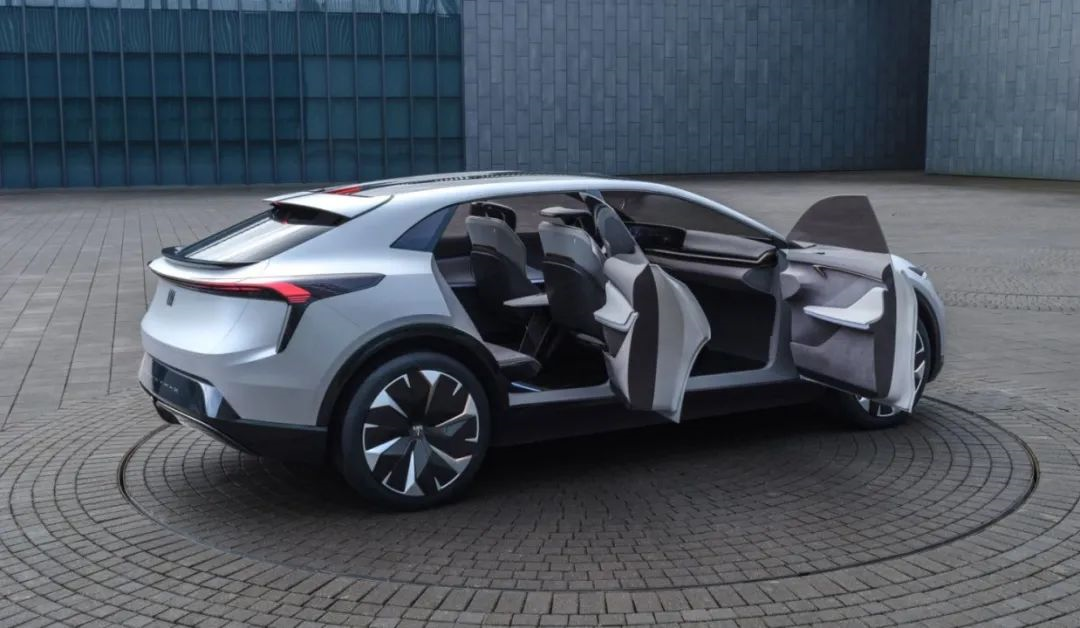
Whether it is moving the elements of the eaves expanding into the wings from the grille to the headlights, or the larger-scale scaly crystal matrix grille highlighting the aggressiveness, or the combination of hidden door handles and frameless doors, and the through-type taillights with multi-layer spoilers for aerodynamic optimization.
All of these will make people feel that Buick has the ability to bring the purity and delicacy of the electric era into reality, rather than using abstract expressions to make the audience understand.
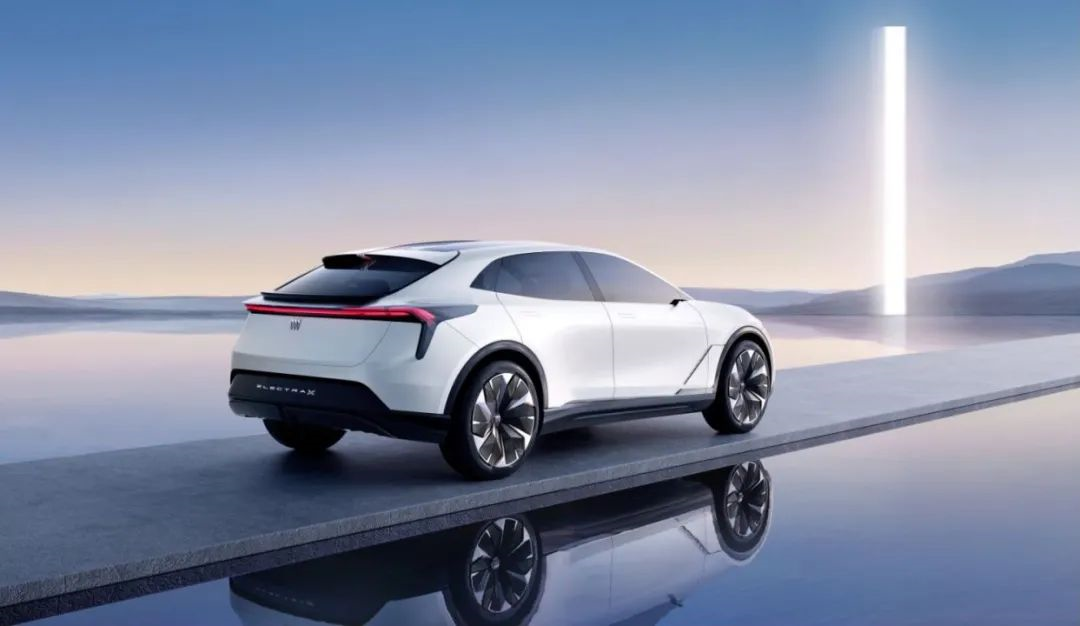
On the other side of the ocean, Buick has also prepared a surprise gift for the electrification era, a Wildcat concept car that showcases the future sedan design language. Inheriting a 70-year-old name, the Wildcat concept car is closer to North American consumers’ unique views on luxury.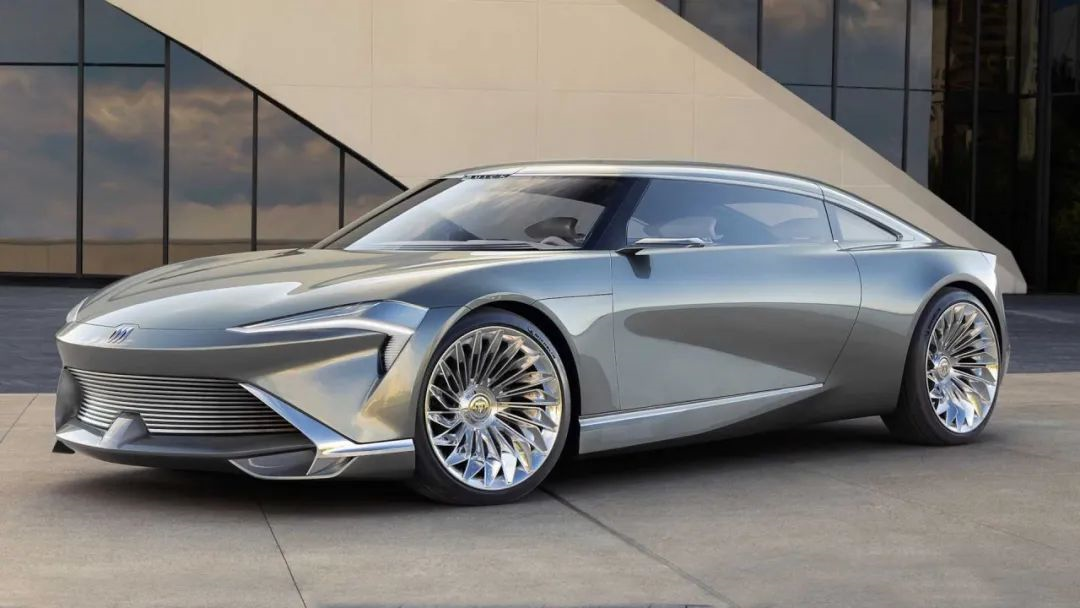
The front of the car combines the headlight design of the GL8 CENTURY and the large grille of the Electra-X, while the dense horizontal decorative strip reflects some of the extravagance of the oil car era.
The side carries the elegance and dynamic feeling of classical GT cars. The addition of chrome-plated fan-shaped wheels reveals the aesthetic peak of the golden age.
The wing-shaped taillights extend to both sides of the rear windshield, giving some angles a sense of familiarity with the luxury brands of Northern Europe. However, the addition of the chrome-plated decorative strip still proves the dignity of the old American luxury car.
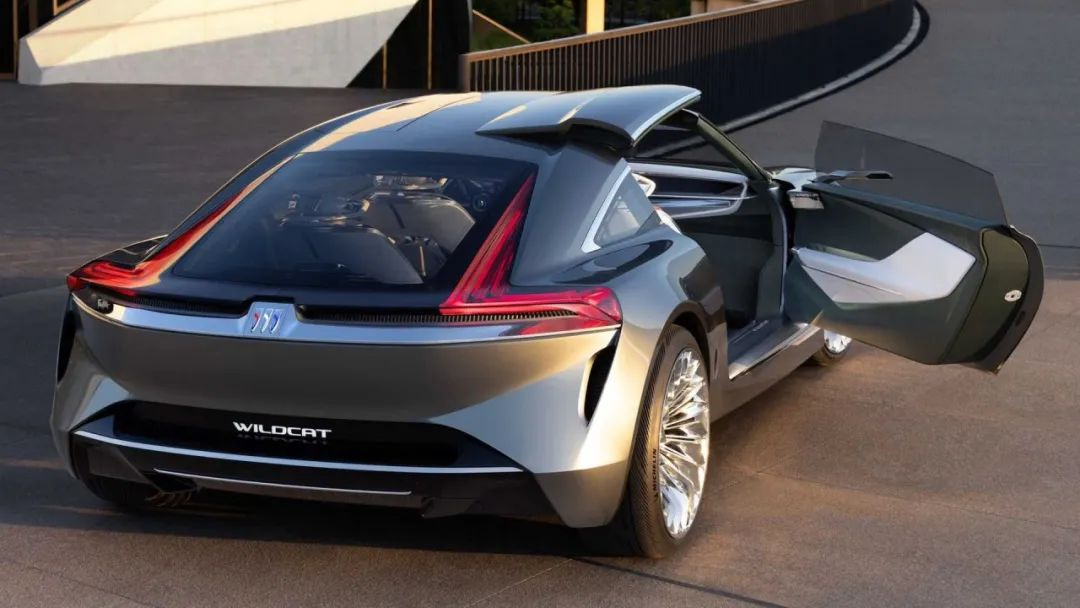
It is obvious that the design of the three models not only embodies the simplicity and purity of the electrified era, but also retains the luxury and heritage of Buick in the oil car era. In the battle between “loyalty to classics” and “breaking with tradition”, Buick walked a path that was most suitable for itself with the design concept of PURE Design.
Ultium – A Different Vision
Thanks to the new energy wave in the Chinese market, Buick is essentially the brand that first explored electrification under the General Motors umbrella. The VELITE WeiLan series took a lead in some limited-license cities. Compared with other joint venture brands’ aggressive electrification strategies, Buick’s pace seems to be somewhat relaxed, and it needs to be more vigilant and urgent to truly achieve electrification conversion.
To achieve true electrification transformation, a conservative “testing the waters” mindset is absolutely unacceptable and may result in being eliminated from the industry’s reshuffle. Buick’s ability to compete with its competitors in terms of technology capital is due to the empowerment of the Ultium electric vehicle platform, which is the underlying architecture of Ultium.
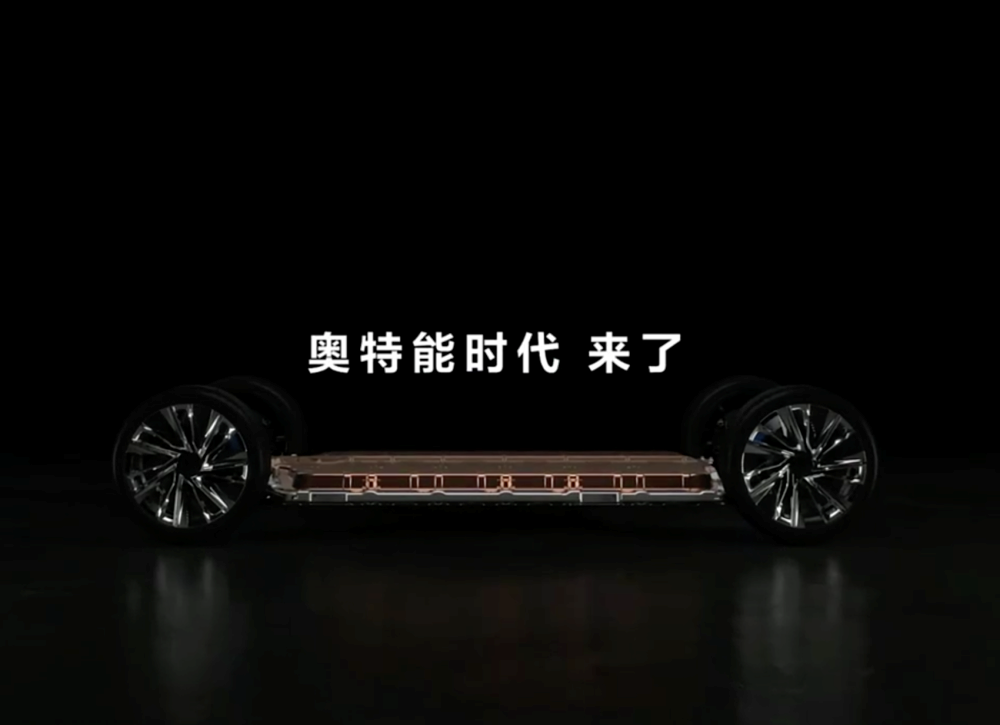
Scale-Up
As the key to the success of General Motors’ transformation, the vehicle planning of the Ultium platform follows a “top-down” path, from the stunning appearance of HUMMER EV to the landing of the domestically available Cadillac LYRIQ sharp song, and now the baton is passed to Buick, which means that the scale-up and popularization of the Ultium platform will become the top priority of Buick’s electrification transformation.
It is worth mentioning that, unlike other joint venture brands that directly introduce foreign technology, the Pan Asia Technical Automotive Center has been deeply involved in the technical R&D of the Ultium platform from the beginning. Localization technology solutions not only make the Ultium platform “smarter, safer, and more efficient”, but also contribute Chinese intelligence to General Motors’ global electrification transformation.To achieve scalability in the electric vehicle industry, the first issue to tackle is standardization.
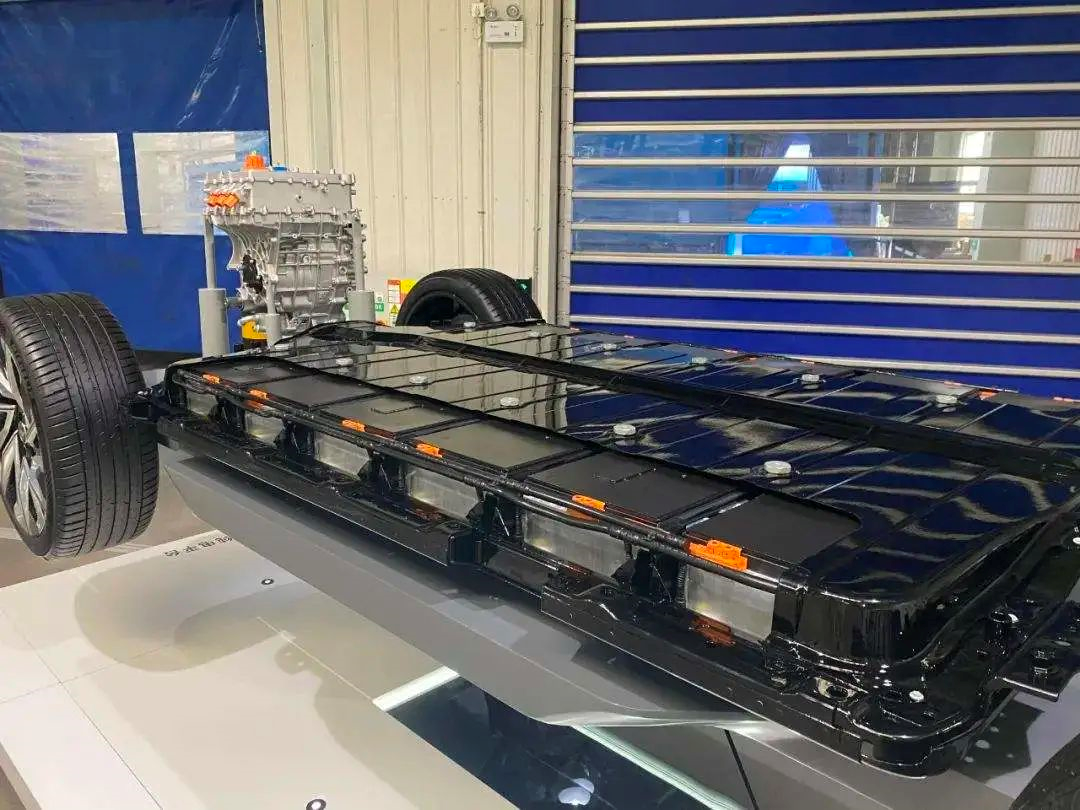
The localized technical solution adopted by Ultium, the Ultium Platform, provides a considerable degree of flexibility. The square-shaped battery cells with NCM 811 high-nickel formulation and the soft-pack battery cells with NCMA quaternary formulation are both available and can be combined to form a unified battery module.
Furthermore, with 100% component interface sharing and a battery pack component sharing rate of approximately 80%, the high-voltage battery pack can be freely combined into 8-module, 10-module, and 12-module configurations, making it compatible with future functional upgrades and optimized battery cell formulations.
To take it even further, trucks such as the HUMMER EV electric pickup, weighing in at 4.1 tons, are equipped with battery packs with a capacity of up to 200 kWh, composed of double-stacked 12-module batteries.
Such flexibility is akin to playing with building blocks, allowing the Ultium Platform to easily be compatible with various vehicle types, such as sedans, sports cars, SUVs, and commercial vehicles. Compared to the meticulous packaging process, General Motors’ pursuit of economies of scale undoubtedly lays the future in the optimization of battery cell formulations and the empowerment of software upgrades, while relying on hardware to “crush” their competitors.
Well, it’s a very American way of doing things.
Intelligence
Another very American approach is the VIP intelligent electronic architecture, which exudes Silicon Valley’s innovative spirit.
Based on greatly improved communication capabilities and electronic bandwidth, the Ultium Platform supports high-speed vehicle Ethernet communication up to 10 Gbps, and the data processing rate of 4.5TB/h is 5 times higher than the previous generation, equivalent to simultaneously downloading hundreds of Blu-ray high-definition 1080P movies, each a few dozen gigabytes in size.
This powerful data processing capability is enough for seamless integration with multiple domain controllers for hard real-time requirements and can be fully upgraded and updated for the lifecycles of dozens of control modules via OTA.
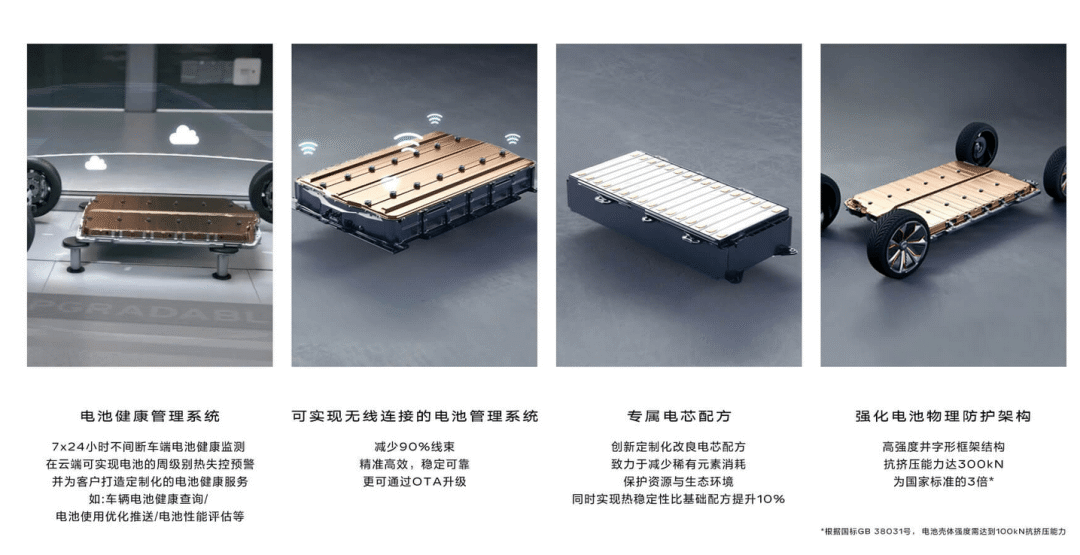
Given the improved “internet speed,” General Motors’ engineers have gone one step further, pushing the BMS battery management system from a wired network to the WiFi era. The unique wireless BMS technology (wBMS) on the Ultium Platform eliminates 90% of the wiring inside the battery pack by embedding radio frequency chips inside each module monitor and the BMS controller to develop a SmartMesh wireless network for data communication.The advantages of wBMS technology are evident: not only can it significantly reduce the weight of wiring harnesses and improve the utilization of structural design space, but it also enhances the assembly flexibility of battery modules, further improving the energy density performance and safety of battery packs while reducing their production costs. When considering the VIP intelligent electronic architecture’s full life cycle OTA updates, maintenance, and upgrades for battery management, freed from the constraints of hardware performance, the upgrade space naturally gains maximum liberation.
However, the proliferation of complex wireless signal transmission has brought about a problem that is as intuitive as it is inescapable: transmission stability is inconsistent, as everyone knows that the experience of connecting to public Wi-Fi while on-the-go is often less than optimal. In the chassis system with an even more hostile working environment, how to minimize external interference with signal transmission undoubtedly presents significant challenges to the pioneering technical staff.
To ensure communication stability, real-time performance, and security, the Ultium Autonable Platform’s wBMS system takes multiple measures, using the 2.4 GHz wireless transmission frequency band and an industrial-grade SmartMesh network architecture. It autonomously employs machine learning to recognize the blocking rate of signal channels, actively avoids interference in communication frequency bands through redundant paths, reduces the probability of single-node failure, and increases network bandwidth to support multiple transmissions concurrently.
Simply put, the terminal can autonomously recognize Wi-Fi networks that have faster network speed and fewer devices, and prepare a standby network with equivalent performance while one Wi-Fi fails, so that information communication never disconnects. For electric cars, this undoubtedly concerns the bottom line of battery safety.
A platform for electrification that combines robust, wild innovation typical of rednecks, the innovation spirit of programmers, and the painstaking thoroughness of engineers, coupled with the strong production capacity and market demand of China’s new energy automotive industry, is an incredible dream team that is beyond doubt, and there is no reason to doubt that Buick’s electrification products will disappoint.
Brand Transformation – A New Direction
At the “Buick Brand Day” event, Buick announced its grand plan: “Launching 12 new models from 2022 to 2025 in China, including 5 new-generation electric vehicles.” The previous routine of relying on product upgrades to innovate and refresh the industry has been accelerated. Not only must Buick quickly expand coverage of the mainstream new energy vehicle market, but it must also expand into more previously unexplored new sub-sectors.
While this is an ambitious undertaking, it stems from Buick’s indifferent attitude towards industry changes in recent years. Although Buick has already positioned itself in the domestic car market with complete sedans, SUVs, and MPVs, its market performance has demonstrated a two-tier situation.
On the one hand, Buick initially entered the mid-to-high-end market with a pioneering spirit, and with the new century and GL8, it established a brand image far superior to its Japanese, Korean, and French counterparts with its distinct sense of American luxury. This enabled Buick to become the perfect match for luxury and joint venture brands, contributing more than half of its sales volume from mid-to-high-priced models. It was even able to compete with “more upscale” German brands, making Buick a formidable force in the industry.But on the other hand, the Buick brand has never given up its investment in low-priced models. From Sail and Aveo to the current Excelle and Verano, the product strength is always not behind, but the huge terminal discounts are like a curse that dissolves the high-end image, and can never be shaken off. As the sedan and SUV, which should be the backbone of sales, have not been able to replicate GL8’s achievements for a long time, they can only rely on the GL8 family and the Aviar model to support Buick’s high-end tone; otherwise, they may have already followed in the footsteps of Chevrolet.
For Buick, in the low-priced market where domestic brands are gradually dominating, being able to maintain the status quo by means of terminal discounts is already the best outcome. If necessary, it can also withdraw gracefully, letting Chevrolet and Wuling take over the incremental sinking market.
But in the mid-to-high-end market above RMB 200,000, the brand heritage that Buick has accumulated over 24 years is still exerting its value.
Driven by the word-of-mouth effect of the GL8 family and the Aviar model among high-net-worth individuals, Buick can leverage its far superior localization advantage to further stabilize the “quasi-luxury” brand image in the hearts of user groups. And by locking in electric and intelligent connections as unique advantages in the mid-to-high-end market, it can cover the demand for upgrades and replacements of derived sedan, SUV, and new energy vehicle models. This is the key to Buick’s new breakthrough.
After the technology and products have completed the front-end tasks of car consumption, the 20 years of “Buick Care” can also show its importance.
As the earliest host factory to launch a professional after-sales brand, Buick deeply understands that no matter how good the brand is, a one-off transaction without follow-up is unlikely to be sustainable. Only by providing a full life-cycle service experience and adhering to professional and efficient service standards can users develop a sense of belonging to the brand.
For Buick, “more electric, more intelligent, and more high-end” are not independent elements fighting against each other, but have a highly unified collaborative relationship.
With advanced technology and innovative design as the driving force, the car needs of Chinese consumers have become the source of collaborative evolution. Ultimately, it will explore a path of high growth that mutually promotes local care and global vision. This is the American brand that has witnessed the development of the Chinese automobile market and understands the experience demands of several generations of Chinese people, seeking the spiritual color and epoch value of self-transformation.
This article is a translation by ChatGPT of a Chinese report from 42HOW. If you have any questions about it, please email bd@42how.com.
